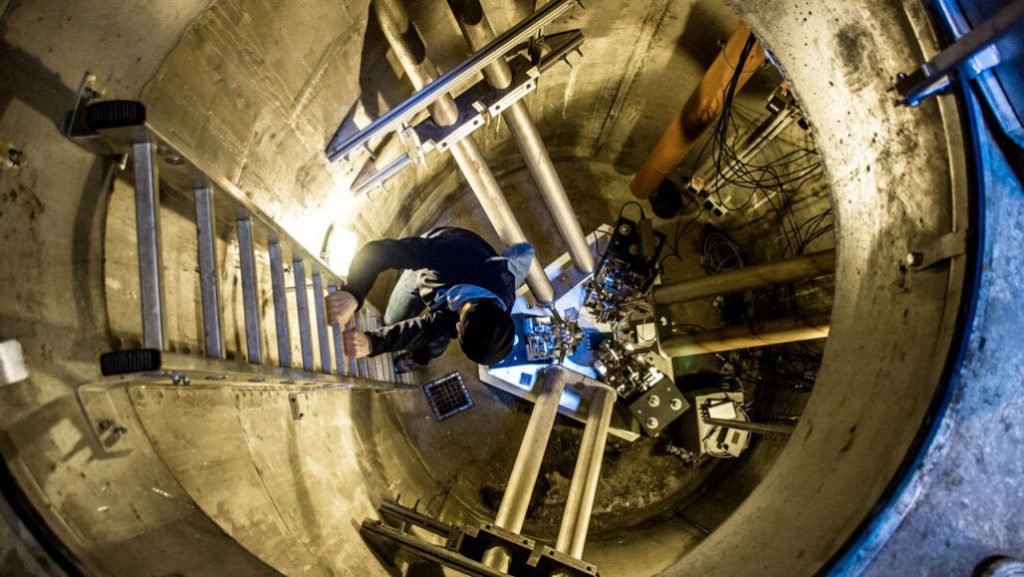Germany’s giant motion sensor is now fully built and has taken it’s first measurements. This motion sensor is built underground and measures earth’s spin and tilt. However, scientists are still setting up the measurement accuracy to the perfection. The observations can help in increasing the accuracy of GPS navigation on devices like smartphones.
WHAT MADE THEM DEVELOP A HUGE SENSOR?
Some natural phenomena like Earthquake and ocean tides continuously affect Earth’s rotation. Which then leads to constant correction of satellite signals providing GPS.

The means of correction that scientists use typically are telescope observations. Telescope observation consists of a set of celestial coordinates to determine earth’s orientation in space. But the result can take several days to process.
So they built ROMY gyroscope array. ROMY states for The Rotational Motions in Seismology. It helps in monitoring earth’s tiniest wobbles continuously. Researchers demonstrated the whole process in an experiment reported online on 17th July in Physical Review letters.
THE PROCESS OF ROMY
ROMY is an upside down pyramid like structure that is made of giant pipes. Each side measures the same length of a telephone pole. It has four triangular faces which detects and measures the motion in different directions. Each side runs two laser beams, one is clockwise through it’s triangular piping. And the second one runs in anticlockwise direction.

The triangles move along with Earth’s rotation. And the laser beams that are moving in the same direction as the rotation have to travel farther to complete it’s loop around the triangle.
This longer loop of the beam will stretch it’s wavelength. Meanwhile, the beam of the opposite direction of the rotation will have a shorter wavelength. The shorter path will compress the wavelength.
And finally scientists with the help of this whole wavelenght mismatch, can now reveal the speed and tilt in Earth’s rotation.
HOW SENSITIVE IS ROMY?
Scientists initiated a test run in the spring of 2019. The test lasted for seven weeks and ROMY sensed the change in Earth’s tilt by less than 0.00014 degrees. That shift in degrees moved the poles of earth across the ground by 15 meters.
ROMY is also so sensitive of Earth’s spin rate that it can detect a four second difference in the length of the day over a single roatation.

But the results are not as accurate as the telescopes. Heiner Igel, a team member of ROMY and seismologist at Ludwig Maximilians University of Munich confirms it. ROMY have to be atleast 100 times more accurate to be in the competition.
And to get that level of accuracy they have to fortify the machine against temperature shifts. The continuous shift in temperature makes pipe contract and expand which messes the measurements.
